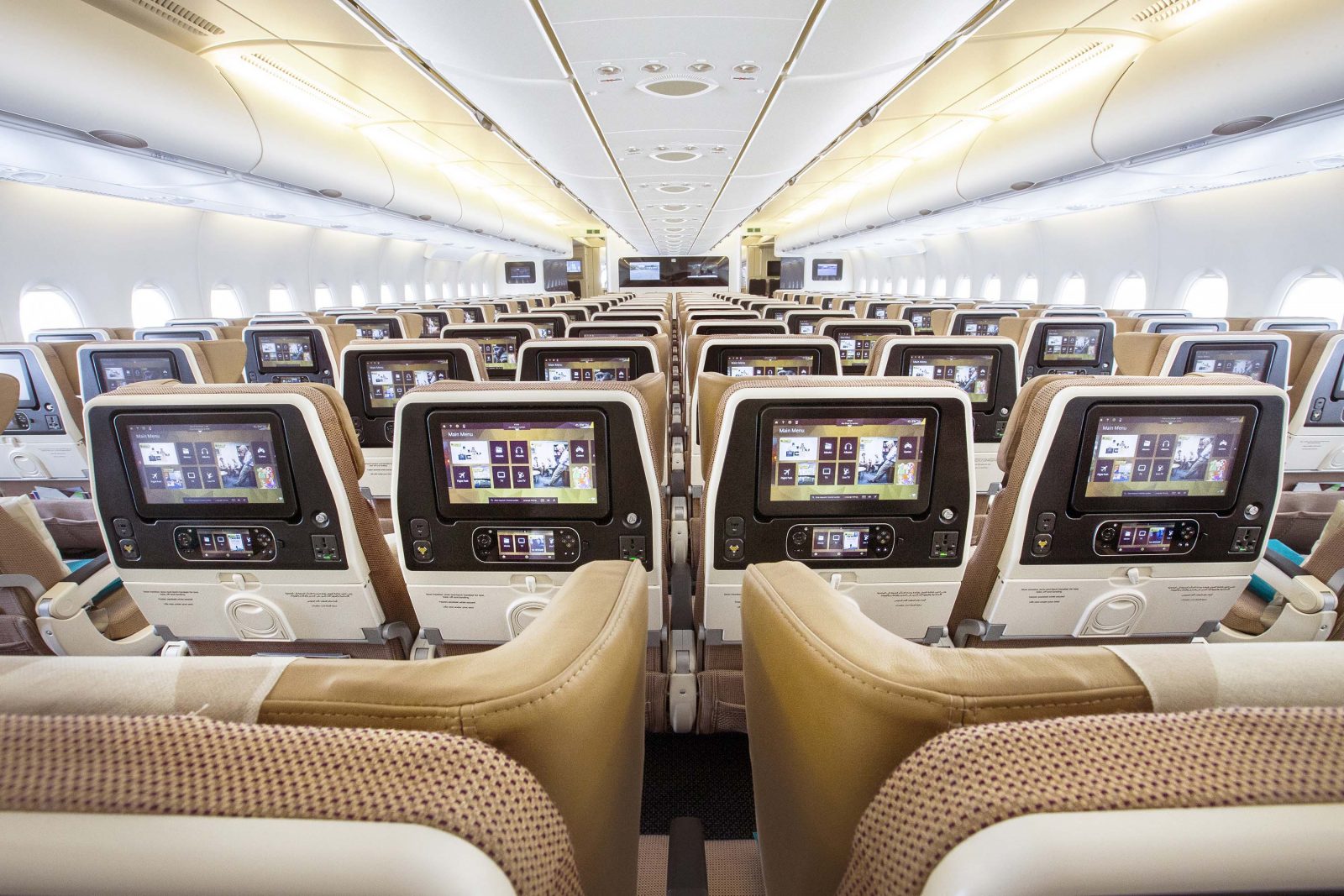
For years, the biggest three airlines in the Middle East – that’s Emirates, Etihad and Qatar Airways – have refused to offer a Premium Economy cabin. In fact, this ever more popular class of travel that bridges the gulf between the cramped confines of Economy and the undoubtedly more comfortable yet prohibitively expensive Business Class hasn’t existed in the region’s aviation market at all.
At one point, the chief executive of Qatar Airways, Akbar Al Baker even suggested that Economy Class on his airline was so good that it matched the comfort and service one would expect to find in a Premium Economy cabin on a competitor airline. That was possibly always a stretch of the imagination.
An average Economy Seat on Qatar Airways is 18.5 inches wide and offers around 32 inches of pitch. Meanwhile, a Premium Economy seat on Taiwan’s Eva Air (credited with being one of the first airlines in the world to introduce the concept in 1992) measures 19.5 inches across and has 38 inches of pitch.
Qatar’s fellow Oneworld partner airline, British Airways offers a similar product in its World Traveller Plus dubbed Premium Economy cabin – along with larger individual TV screens, improved food and drink offering and a smaller, more intimate cabin.
The popularity of Premium Economy seems unstoppable – business travellers are being downgraded to PE as corporate travel budgets are squeezed, while at the other end of the spectrum more leisure travellers are willing to splurge on the extra room and comfort that PE offers.
Even refusnik U.S.-based airlines like American Airlines and Delta have seen the light and are rolling out their own versions. British Airways says it plans to dramatically increase the number of PE seats available on its aircraft as demand for the product skyrockets.
We already knew that Emirates is planning to launch its own Premium Economy product in 2020 after several years of mulling over the pro’s and con’s (the airline’s president, Sir Tim Clark was long concerned that such a product would cannibalise Emirates’ Business Class cabin).
Speaking in 2017, Clark said Emirates “may have underestimated the demand for premium economy” and that when the product launches in two years time, it will be “special”. The airline has already “spec’d out” the seat and cabin, although its still working on making sure the “maths work out”.
Now we know that Etihad also plans to launch a PE product – kind of. The airline plans to retrofit 10 of its Airbus A380’s with what its calling an Economy Space seat – essentially, they’re just Economy seats but with more legroom. Offering 36-inches of pitch, they’ll be less generous than that offered by competitors although will undoubtedly still prove to be popular.
On top of the A380’s, Etihad will also retrofit 12 Boeing 777’s and 21 Boeing 787 Dreamliner’s with Economy Space seats by the end of 2019.
Etihad already sells certain seats, like emergency exit row seats as Economy Space seats, but this reconfiguration will increase the number of extra legroom seats across the airline’s fleet by 560%.
“While many airlines have been squeezing more seats into economy class, we continue to focus on providing our guests with exceptional products and services that meet and exceed the demands and budgets of different types of travellers,” explained Etihad’s Jamal Ahmed Al Awadhi.
In reality, this is very much “Premium Economy Lite” although Etihad will be able to charge a premium price for the service. In addition to the Economy Space seats, the airline already asks passengers to pay for the chance of securing an empty middle seat on less full flights and allows Economy customers to purchase Business Class amenity kits.
Don’t be surprised to see the Abu Dhabi-based airline invest in a proper PE in the next couple of years. What’s more surprising is why Etihad isn’t taking the plunge now.
Related
Revealed: First Look Inside Etihad Airways’ New Airbus A350 With Brand New Business Class SuiteIn "Airline News"
Well That Was Underwhelming: First Look at Qatar Airways New Economy Class SeatIn "Airline News"
Etihad Airways Will Finally Start Flying its Airbus A350 Planes By The End of JuneIn "Airline News"
Mateusz Maszczynski honed his skills as an international flight attendant at the most prominent airline in the Middle East and has been flying ever since... most recently for a well known European airline. Matt is passionate about the aviation industry and has become an expert in passenger experience and human-centric stories. Always keeping an ear close to the ground, Matt's industry insights, analysis and news coverage is frequently relied upon by some of the biggest names in journalism.







